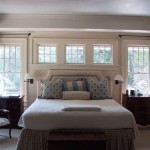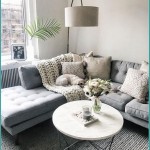Home Decor Room Color Ideas
Choosing the right color for your home can significantly impact the ambiance and overall mood of a space. From creating a calming sanctuary to invigorating a workspace, color plays a crucial role in how we experience our homes. Understanding the psychology of color and its various effects can guide you in selecting the perfect hues for each room, transforming them into spaces that reflect your personal style and inspire well-being.
Understanding Color Psychology
Color psychology explores the relationship between color and human emotions, behavior, and perceptions. Different colors evoke distinct feelings and reactions, influencing our mood, energy levels, and even our decision-making. For instance, warm colors like red, orange, and yellow are associated with energy, passion, and warmth, while cool colors like blue, green, and purple tend to promote calmness, tranquility, and focus.
It is important to consider the intended use of a room when selecting its color. For example, a bedroom designed for relaxation might benefit from soothing blues or greens, while a kitchen meant for socializing could be energized with bright yellows or oranges. Understanding the psychology of color can help you choose hues that complement your desired atmosphere and purpose.
Popular Room Color Ideas
Here are some popular color ideas for different rooms in your home, along with their associated benefits and considerations:
Living Room
Living rooms are often the heart of a home, serving as gathering spaces for family and friends. Here, a balance of warmth and welcoming energy is key. Neutral colors like beige, cream, and gray provide a versatile backdrop for various furniture and decor styles. These colors create a sense of spaciousness and allow other elements to take center stage. For a more vibrant and inviting feel, consider incorporating accent walls in bolder shades like deep blue, emerald green, or terracotta. These pops of color can add personality and depth to the room without overwhelming the overall aesthetic.
Bedroom
Bedrooms should be havens of peace and tranquility. Soft, calming colors are best suited for this space, promoting relaxation and restful sleep. Light blues, pale greens, and lavender are known for their soothing effects, creating a serene and inviting atmosphere. Subdued shades of gray, beige, and cream also work well, providing a sense of calm and sophistication. Avoid using bright, stimulating colors in the bedroom, as they can interfere with sleep.
Kitchen
Kitchens often serve as the heart of the home, where family and friends gather for meals and conversation. Therefore, choosing colors that stimulate appetite and encourage socialization is essential. Warm, inviting hues like yellow, orange, and red can invigorate the space and create a welcoming ambiance. However, be mindful of the intensity of these colors, as too much can be overwhelming. Consider using them as accents or on specific walls to create a balanced and vibrant effect. Neutral colors like white and cream also work well in kitchens, providing a clean and bright backdrop for colorful appliances and accessories.
Bathroom
Bathrooms are spaces for rejuvenation and personal care. Colors should evoke feelings of cleanliness, relaxation, and spa-like tranquility. Soft blues, greens, and grays can create a calming and refreshing atmosphere. These colors are also known to be visually calming, making them ideal for reducing stress and promoting relaxation. White and cream are also popular choices, creating a sense of cleanliness and spaciousness. Avoid using dark or overpowering colors in bathrooms, as they can make the space feel cramped and claustrophobic.
Tips for Choosing Room Colors
Here are some tips to help you choose the perfect colors for your home:
- Consider the natural light: Rooms with abundant natural light can handle bolder colors, while rooms with limited light may require lighter hues to prevent a gloomy atmosphere.
- Think about the size of the room: Light colors can make small spaces feel larger, while darker colors can create a cozy feel in spacious rooms.
- Pay attention to the existing furniture: Choose colors that complement your existing furniture and decor. This will help create a cohesive and harmonious aesthetic.
- Use a mood board: Create a mood board with different color palettes and textures to visualize how the colors will work together in your space.
- Don't be afraid to experiment: Test out different color samples on the walls before committing to a final decision. This will allow you to see how the colors look in your specific lighting and environment.
By understanding the psychology of color and considering the intended use of each room, you can create a home that is not just beautiful but also fosters well-being and reflects your personal style.

30 Living Room Color Ideas Best Paint Decor Colors For Rooms

100 Best Color Ideas For Every Rooms Decorating With Paint

27 Colorful Home Design Decorating Ideas Extra Space Storage

30 Living Room Paint Colors Inspiration For An Inviting Space Beamin Moore Green Color Schemes Wall

27 Colorful Home Design Decorating Ideas Extra Space Storage

5 Neutral Living Room Paint Color Ideas Design Cafe

27 Colorful Home Design Decorating Ideas Extra Space Storage

The Most Popular Living Room Colours For 2025
:max_bytes(150000):strip_icc()/warm-and-cozy-paint-colors-down-pipe-2f1db86467ff44f9a353672387c8dfba.jpg?strip=all)
15 Paint Colors That Will Make Your Home Feel Warm And Cozy

Interior Paint Ideas Colors Trends Architectural Digest
Related Posts







